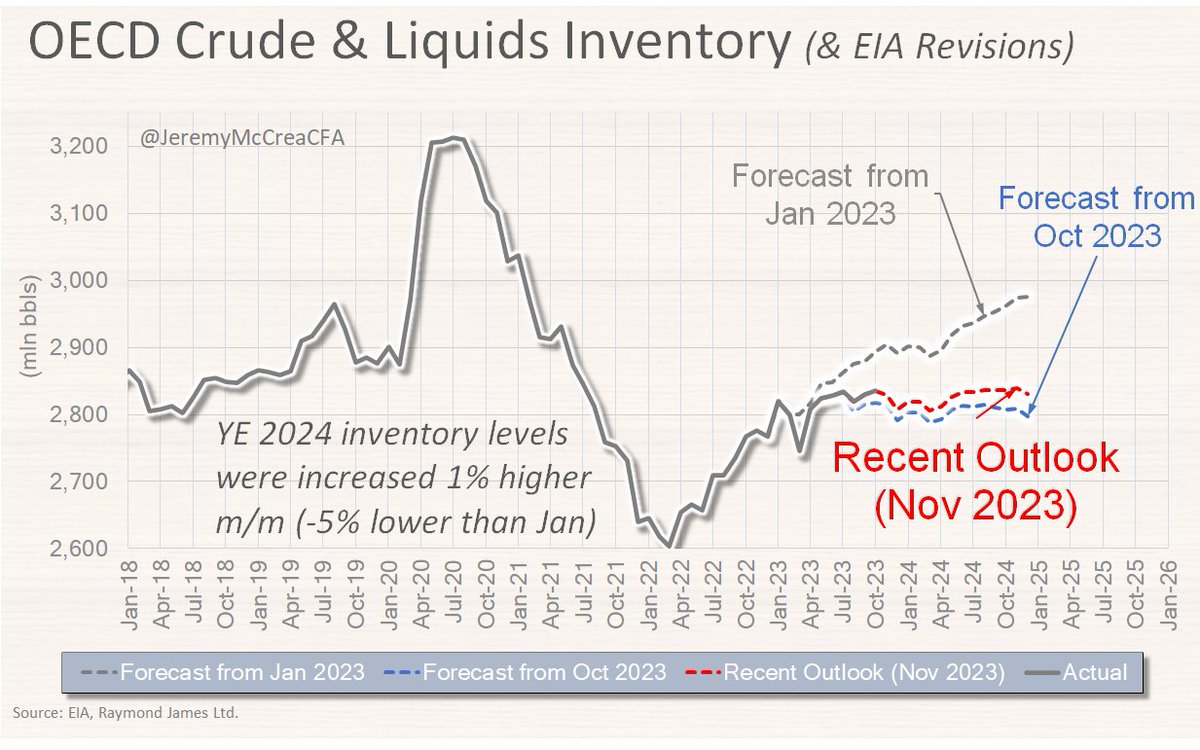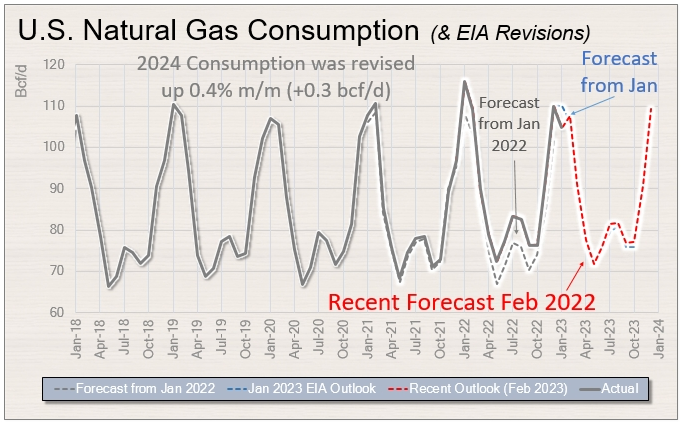Thread (1/5): EIA Short-Term Oil Outlook Highlights
A top concern we hear from investors is the "Backwardation in the oil strip". This price reflects a recovery in crude inventories but as the EIA revisions show today, they’re back to revising inventory levels lower again #oott
A top concern we hear from investors is the "Backwardation in the oil strip". This price reflects a recovery in crude inventories but as the EIA revisions show today, they’re back to revising inventory levels lower again #oott

Thread (2/5): EIA Short-Term Oil Outlook Highlights
Despite recession fears & high gasoline prices, global oil expected consumption was left essentially unchanged (OECD countries revised 0.2% lower; offset by non-OECD countries higher) #crude
Despite recession fears & high gasoline prices, global oil expected consumption was left essentially unchanged (OECD countries revised 0.2% lower; offset by non-OECD countries higher) #crude

Thread (3/5): EIA Short-Term Oil Outlook Highlights
Although no changes were made m/m, oil supply has still been revised down from Jan forecasts. This is despite WTI prices moving higher since then. Overall, shows the discipline with producers and not rushing back to drill #oott
Although no changes were made m/m, oil supply has still been revised down from Jan forecasts. This is despite WTI prices moving higher since then. Overall, shows the discipline with producers and not rushing back to drill #oott

Thread (4/5): EIA Short-Term Oil Outlook
Why could oil prices move higher? The EIA model needs some fixing. The plug balancing demand/supply is still 0.6 mln bbls/d. As usual, the EIA's outlook assumes no need for adjustments going forward. Should impact future inventories #oott
Why could oil prices move higher? The EIA model needs some fixing. The plug balancing demand/supply is still 0.6 mln bbls/d. As usual, the EIA's outlook assumes no need for adjustments going forward. Should impact future inventories #oott

Thread (5/5): EIA Short-Term Oil Outlook Highlights
OPEC's oil spare capacity continues to diminish, revised down 1.1 mbbls/d since Jan. Total spare capacity now sits at 2.1 mbbls/d with future capacity expected to stay limited out to 2023 #OPEC #oott #CrudeOil
OPEC's oil spare capacity continues to diminish, revised down 1.1 mbbls/d since Jan. Total spare capacity now sits at 2.1 mbbls/d with future capacity expected to stay limited out to 2023 #OPEC #oott #CrudeOil

• • •
Missing some Tweet in this thread? You can try to
force a refresh






















